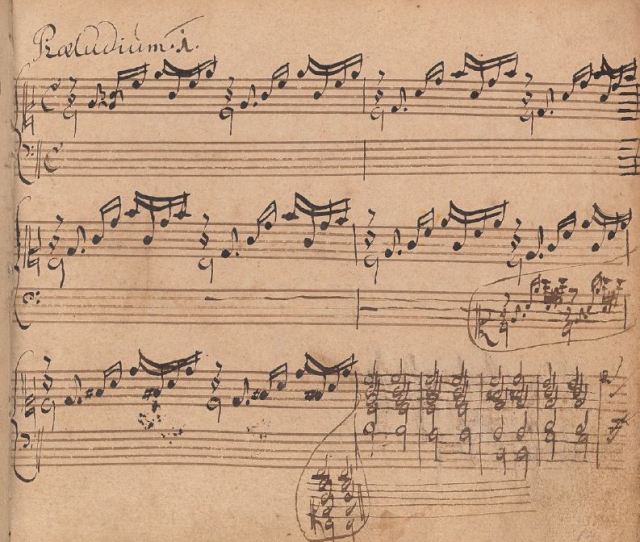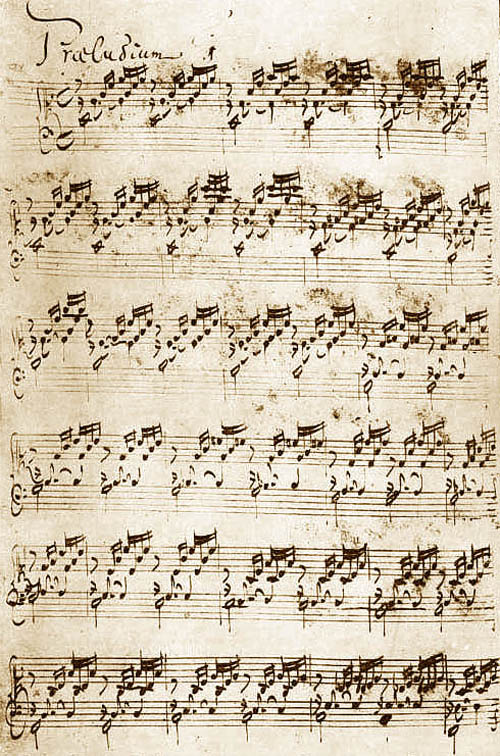There are times when a sudden discovery on the internet stops us in our tracks. For me, the image below is one of those moments, as I come face to face (albeit digitally) with the manuscript of JS Bach’s Prelude in C from Book 1 of Das Wohltemperierte Klavier – The Well-Tempered Clavier.
Say ‘Prelude’ to a pianist in a word association game. The likely reply may well be ‘Fugue’, and thoughts will turn to JS Bach’s two volumes of Preludes and Fugues. In the first book, written in 1722 possibly as an experiment in equal temperament, the key scheme progresses chromatically from C major to C minor, then C# major/C# minor etc. right through the twelve major and twelve minor keys. Volume two, dated between 1739 and 1742, repeats the process.
But even more fascinating is this – the same prelude, but from Wilhelm Friedemann Bach’s notebook, the collection of pieces written by Johann Sebastian in 1720 for his eldest son by his first wife, when Wilhelm was 10. It starts in the familiar way, but then breaks off from the figuration to write the harmonic patterns, on which the figurations are based, as chords.
 The prelude appears yet again in the Anna Magdalena Notebook of 1725 – this was the second of two notebooks compiled for Anna Magdalena Bach, JS Bach’s second wife, containing keyboard works and arias by various composers. In this version, 4 bars are omitted, perhaps so that it can be fitted into two landscape manuscript pages. To see the first sixteen bars, scroll down to the sixth page here. (And rotate!)
The prelude appears yet again in the Anna Magdalena Notebook of 1725 – this was the second of two notebooks compiled for Anna Magdalena Bach, JS Bach’s second wife, containing keyboard works and arias by various composers. In this version, 4 bars are omitted, perhaps so that it can be fitted into two landscape manuscript pages. To see the first sixteen bars, scroll down to the sixth page here. (And rotate!)
Musically, the prelude follows a journey from C major back to C major, via a series of modulations; to the dominant key of G major first, followed by the anxiety of D minor, soon resolved. The choice of harmonies becomes gradually darker until a long passage over a dominant pedal point brings the final relief of a perfect cadence; even then, Bach initially inserts a B flat , briefly turning towards the nostalgia of the sub-dominant key, before cancelling it and reaching the safety-net of the tonic chord.
In the manuscript of the second book of Preludes and Fugues, not only is Bach’s handwriting evident, but also Anna Magdalena’s, Wilhelm Friedemann’s – and that of JS Bach’s son- in-law, Johann Altnickol. They all helped with the copying. Very much a family affair.
Here is Schiff –

